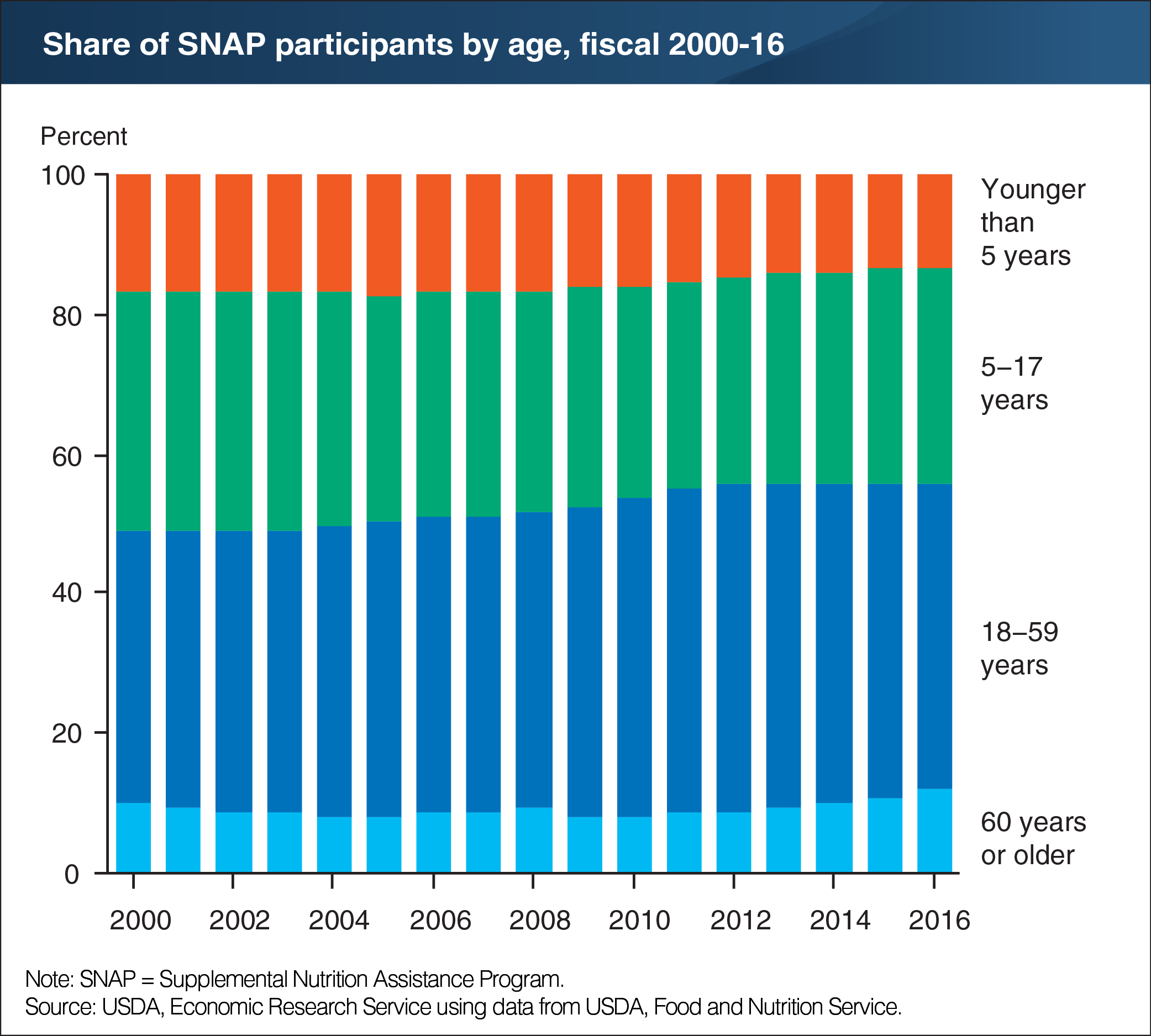Economic conditions, legislation, and demographics influence the age composition of the SNAP caseload
- by Alex Majchrowicz
- 6/12/2018

In fiscal 2016, 44.1 percent of the 43.5 million Americans participating in USDA’s Supplemental Nutrition Assistance Program (SNAP) were children, 44.1 percent were working-age adults, and 11.8 percent were elderly. The age composition of SNAP participants varies over time in response to economic conditions, legislative modifications, and demographic trends. Job losses that accompanied the 2007-09 recession and the slow recovery resulted in more working-age adults (ages 18-59) becoming eligible for SNAP benefits and seeking assistance. Legislation enacted in 2009 that waived time limits on benefits and work requirements for able-bodied adults without dependents further expanded the number of working-age participants. Working-age adults’ share of the SNAP caseload rose from 42.4 percent in 2007 to a peak of 46.5 percent in 2012, and then fell to 44.1 percent by 2016 as the economy improved and benefit time limits were reimposed in parts of most States. Children under age 5 have become a smaller share of SNAP participants, indicative of the decline in the number of U.S. births. The share of SNAP participants who are elderly (age 60 or older) has risen in recent years, reflecting the aging U.S. population, greater outreach to the elderly, and a simplified SNAP application process. This chart is from “Age Composition of USDA’s SNAP Caseload Shifts in Response to Economic Conditions, Legislation, and Demographic Trends”in ERS’s June 2018 Amber Waves magazine.

